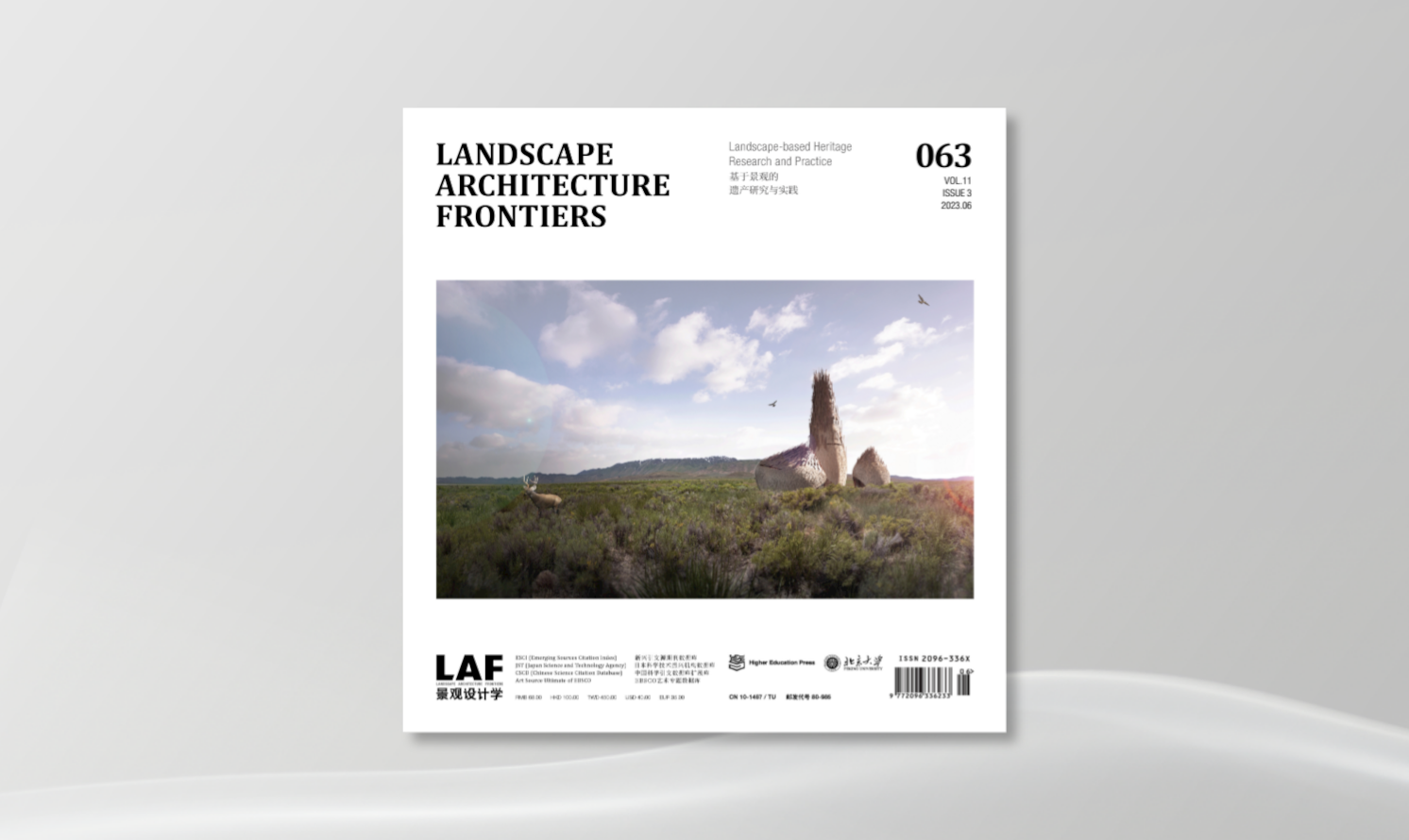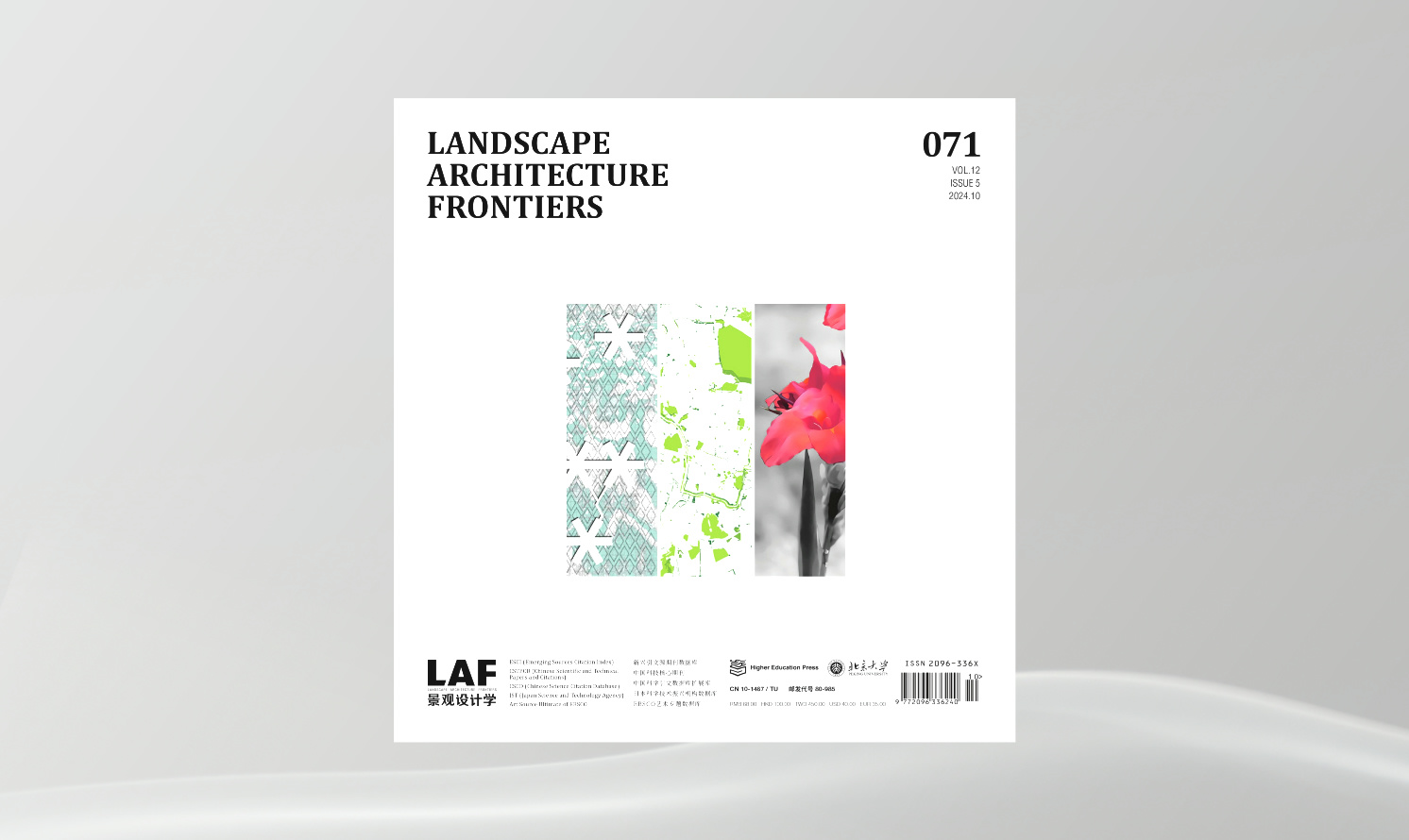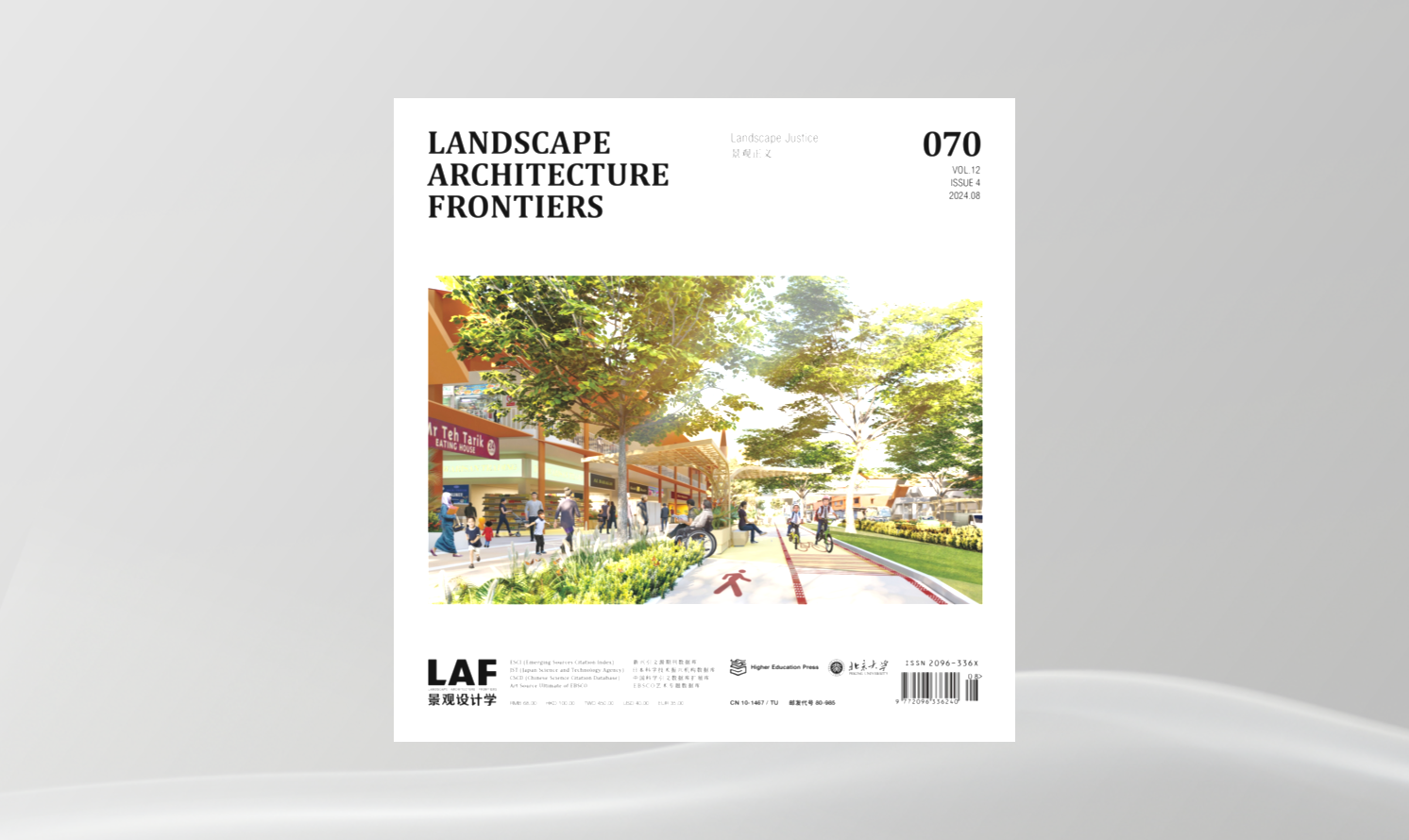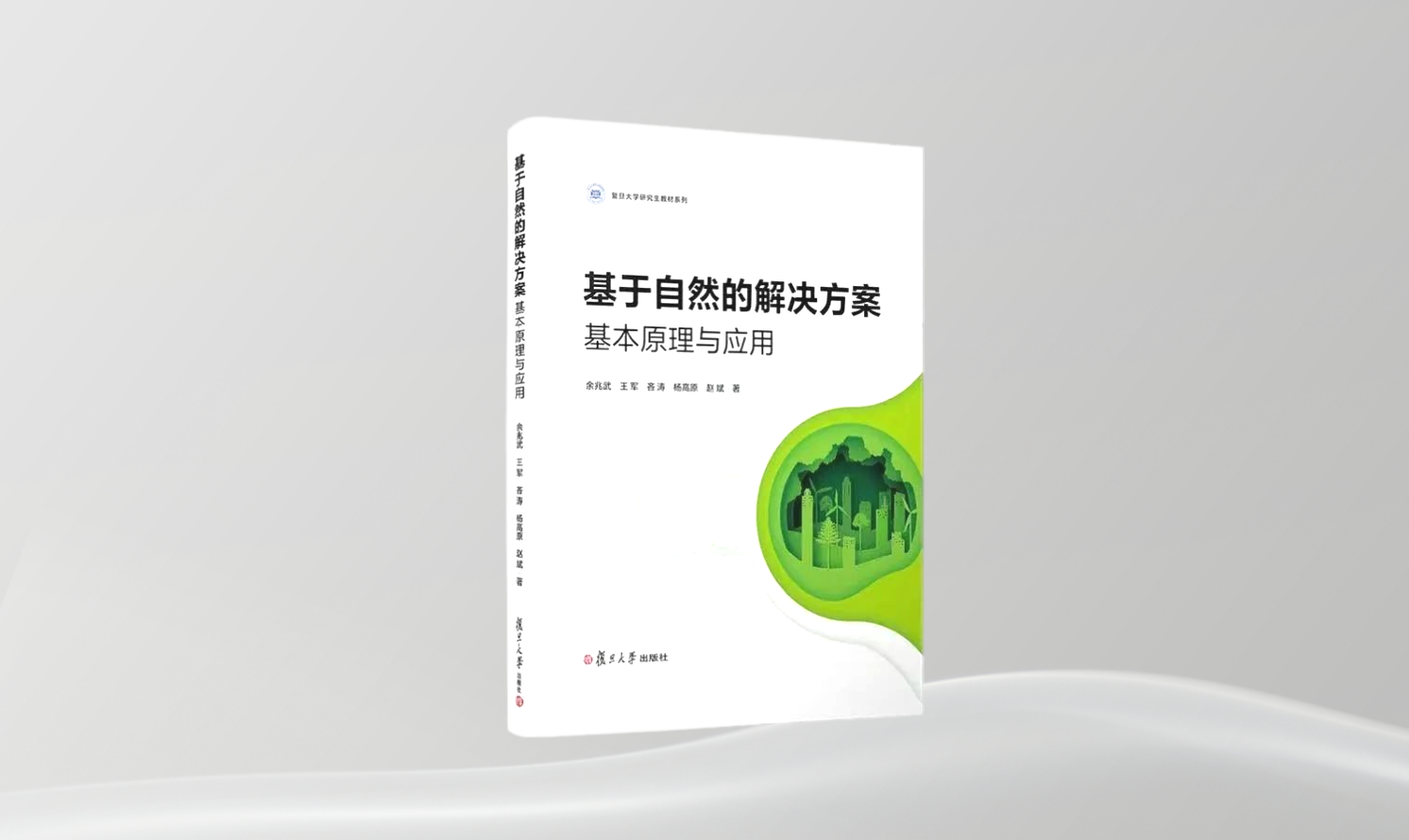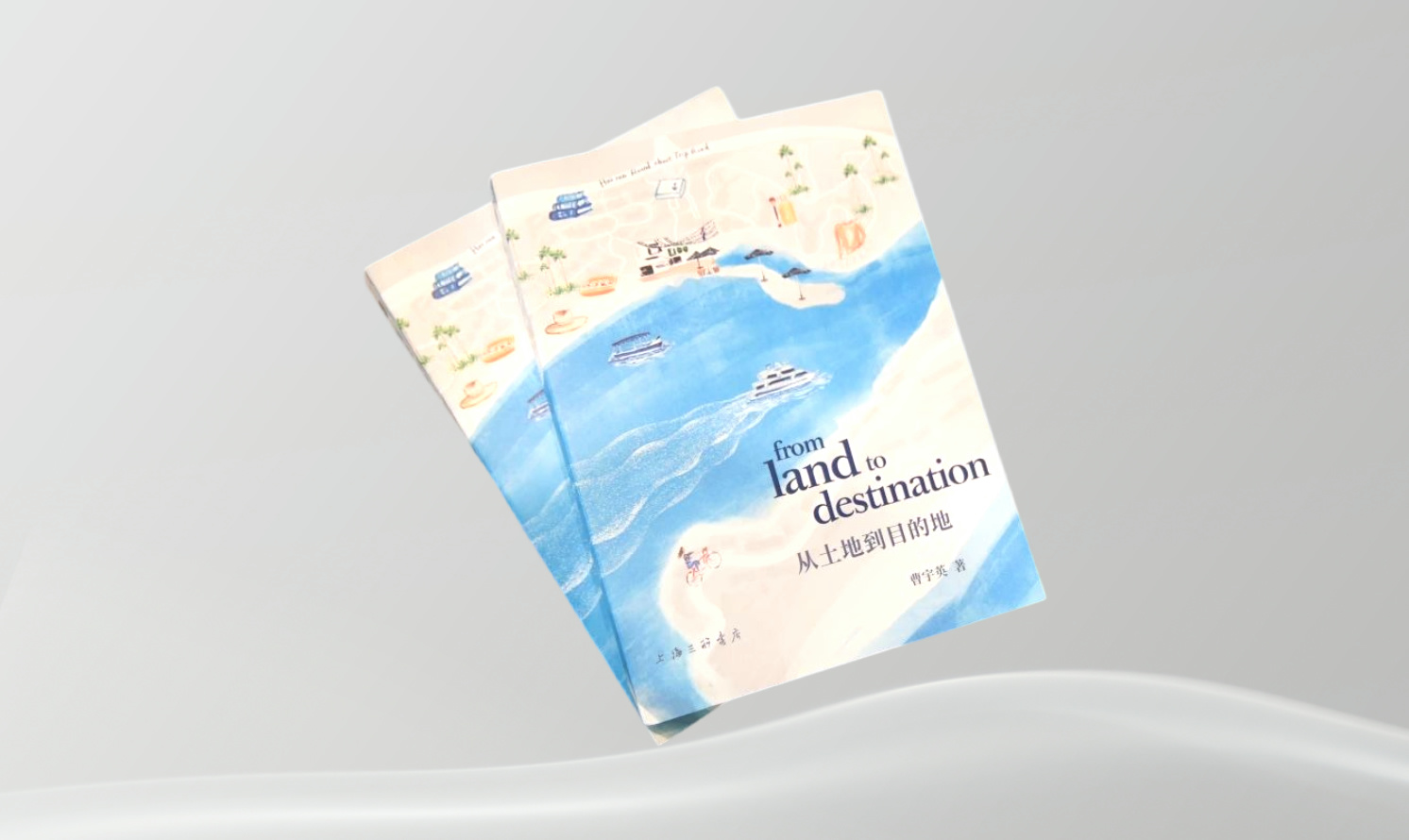基于歷史性城市景觀與數(shù)字足跡視角的遺產(chǎn)廊道選線方法——以中國(guó)南京市歷史城區(qū)為例
Heritage Corridor Routing Method From Historic Urban Landscape and Digital Footprint Perspectives—The Case of Historical Urban Area in Nanjing, China
作者:周詳,湯雨杭��,蘇俊吉 Xiang ZHOU, Yuhang TANG, Junji SU
摘要
遺產(chǎn)廊道作為一種串聯(lián)歷史文化與自然景觀資源的系統(tǒng)性保護(hù)方法���,融合了人文環(huán)境與自然環(huán)境���,可以為公眾提供休閑娛樂(lè)、游憩健身等活動(dòng)的連續(xù)線性空間��。傳統(tǒng)的遺產(chǎn)廊道選線研究大多聚焦于分析物質(zhì)空間條件���,忽略了公眾感知表達(dá)和公共參與機(jī)制�。基于歷史性城市景觀理念挖掘與傳統(tǒng)遺產(chǎn)內(nèi)容緊密關(guān)聯(lián)的現(xiàn)代景觀資源�����,通過(guò)解析游憩者的數(shù)字足跡�,將人群游憩行為偏好與空間感知納入遺產(chǎn)廊道選線過(guò)程,可實(shí)現(xiàn)城市物理語(yǔ)義選線與社會(huì)語(yǔ)義選線的結(jié)合�。基于此����,本研究包括三個(gè)部分:1)通過(guò)數(shù)字足跡分析,將城市傳統(tǒng)遺產(chǎn)與景觀資源點(diǎn)納入遺產(chǎn)廊道選線過(guò)程��,通過(guò)最小累積阻力模型擬合物理語(yǔ)義選線結(jié)果���;2)利用數(shù)字足跡中的人群流動(dòng)軌跡與網(wǎng)絡(luò)文本信息構(gòu)建共詞矩陣�,完成社會(huì)語(yǔ)義選線�����;3)耦合物理語(yǔ)義選線與社會(huì)語(yǔ)義選線結(jié)果�����,結(jié)合實(shí)際情況優(yōu)化遺產(chǎn)廊道選線結(jié)果。研究實(shí)現(xiàn)了在遺產(chǎn)廊道選線過(guò)程中�,將城市景觀資源與公眾游憩行為和空間感知的有效整合,有利于城市遺產(chǎn)的整體保護(hù)與公共空間的系統(tǒng)提升�����。
關(guān)鍵詞
遺產(chǎn)廊道�����;選線����;歷史性城市景觀���;最小累積阻力模型���;數(shù)字足跡;社會(huì)網(wǎng)絡(luò)模型�;城市景觀資源
Abstract
As a method of the systematic conservation of historical, cultural, and natural landscape resources, heritage corridor integrates contexts of humanism and nature and provides the public with continuous linear spaces for recreation, leisure, and fitness activities. Most traditional studies on heritage corridor route planning focus on the analysis of physical spatial conditions, while ignoring public perception and public participation mechanisms. Based on the concept of Historic Urban Landscape, this research excavates modern landscape resources that are closely connected with traditional heritages and analyzes users’ digital footprints to incorporate public preferences of recreational behaviors into the process of heritage corridor route planning, realizing the combination of physical and social semantic data analyses. Basically, this study consists of three parts: 1) through analysis of digital footprints, select urban traditional heritage sites and landscape resource spots into the process of heritage corridor route planning, and fit the preliminary routes of urban heritage corridors with minimum cumulative resistance model; 2) construct a co-word matrix consisting of users’ movement flows and online textual data in the digital footprints, to complete the route planning upon social semantic data analysis; and 3) superimpose the results of heritage corridor route planning generated by the above two steps, and optimize according to the reality of urban environment. The study realizes an effective integration of urban landscape resources with public recreational behaviors and spatial perception in the process of heritage corridor route planning, offering reference to the overall protection of urban heritages and the systematic improvement of public space.
Keywords
Heritage Corridor; Route Planning; Historic Urban Landscape; Minimum Cumulative Resistance Model; Digital Footprint; Social Network Model; Urban Landscape Resources
基于多元利益群體支付意愿的國(guó)家公園景觀資源價(jià)值貨幣化核算評(píng)估
Monetized Evaluation of Landscape Resources of National Parks Based on the Willingness to Pay of Multiple Interest Groups
作者:王鵬,何友均�,李樂(lè),李楠��,謝和生,楊欣�,沈偉航 Peng WANG, Youjun HE, Le LI, Nan LI, Hesheng XIE, Xin YANG, Weihang SHEN
摘要
國(guó)家公園是我國(guó)自然景觀最獨(dú)特的國(guó)土空間之一??茖W(xué)評(píng)估景觀資源價(jià)值對(duì)于實(shí)現(xiàn)國(guó)家公園原真性與完整性的保護(hù)具有重要作用。本文以錢江源國(guó)家公園體制試點(diǎn)區(qū)為例�,采用條件價(jià)值法,通過(guò)調(diào)研內(nèi)部群體(社區(qū)居民與管理人員)和外部群體(外來(lái)游客)對(duì)假想市場(chǎng)項(xiàng)目的支付意愿�����,對(duì)該國(guó)家公園景觀資源價(jià)值進(jìn)行貨幣化核算評(píng)估��,并在此基礎(chǔ)上采用Logistic回歸模型分析影響景觀資源價(jià)值的關(guān)鍵因素�。結(jié)果顯示,外部群體支付率高于內(nèi)部群體�,且不同特征的人群具有不同的支付率。改善生態(tài)環(huán)境是不同群體愿意為假想市場(chǎng)項(xiàng)目進(jìn)行支付的主要原因����,但拒絕支付的原因存在明顯差異,自身收入低是導(dǎo)致內(nèi)部群體拒絕支付的主要原因��,認(rèn)為假想市場(chǎng)項(xiàng)目應(yīng)由財(cái)政支付是外部群體拒絕支付的主要原因��。研究區(qū)域景觀資源價(jià)值為1.35億元,其中���,外部?jī)r(jià)值明顯高于內(nèi)部?jī)r(jià)值��,而態(tài)度因素比人口和環(huán)境因素對(duì)景觀資源價(jià)值的影響更大�。國(guó)家公園景觀資源價(jià)值受到多元利益群體的認(rèn)知�、訴求和利益驅(qū)動(dòng)的影響,研究建議加快構(gòu)建標(biāo)準(zhǔn)化核算評(píng)估技術(shù)體系�����,為中國(guó)的國(guó)家公園體系建設(shè)提供支撐��。
關(guān)鍵詞
國(guó)家公園�����;景觀資源價(jià)值�;貨幣化核算評(píng)估��;支付意愿�;多元利益群體
Abstract
In China, national parks represent the country’s most unique natural landscapes. Scientific evaluation of landscape resources is significant for preserving the authenticity and integrity of national parks. Taking Qianjiangyuan National Park System Pilot Zone as an example, this research investigated the willingness of internal group (residents and administrative staff) and external group (tourists) to pay for a hypothetical market project based on the pilot zone via Contingent Valuation Method to acquire the monetized value of landscape resources in the national park, and applied Logistic Regression to analyze the influencing factors. The results show that the payment rate of external group is higher than that of internal group, and people with different demographics have different payment rates. Both internal and external groups are willing to pay to improve ecological environment, but there are significant differences on reasons for refusal—having a low income is the main reason for the internal group, and the external respondents refuse mainly because of the belief that the payment is owed to government finance. The total monetized value of the research area is 135 million yuan, of which the external value is much higher than internal value. The attitude factors influence landscape resource value more significantly than demographic and environmental factors. The assessment of landscape resource value of national parks is affected by perceptions and demands of multiple interest groups. This research suggests accelerating the construction of a standardized assessment technical system to support the establishment of national park system in China.
Keywords
National Park; Landscape Resources Value; Monetized Evaluation; Willingness to Pay; Multiple Interest Groups
中國(guó)大熊貓國(guó)家公園社會(huì)影響評(píng)估研究——基于界內(nèi)、門戶和邊緣社區(qū)的比較分析
Social Impact Assessment of the Giant Panda National Park in China: A Comparative Analysis of the Inside, Gateway, and Fringe Communities
作者:張雨琦��,張引 Yuqi ZHANG, Yin ZHANG
摘要
社會(huì)影響評(píng)估是國(guó)家公園體制建設(shè)的現(xiàn)實(shí)需求,但相關(guān)概念框架��、理論認(rèn)識(shí)和系統(tǒng)評(píng)估仍不足�。基于中國(guó)國(guó)家公園體制建設(shè)的特征��,本文優(yōu)化了社會(huì)影響評(píng)估框架和指標(biāo)體系�����,選擇中國(guó)大熊貓國(guó)家公園(唐家河園區(qū))周邊的三類典型社區(qū)——界內(nèi)社區(qū)���、門戶社區(qū)和邊緣社區(qū)進(jìn)行比較分析�。通過(guò)問(wèn)卷調(diào)查�、半結(jié)構(gòu)化訪談、因子分析和單因素方差分析�����,研究發(fā)現(xiàn):1)大熊貓國(guó)家公園綜合社會(huì)影響感知偏消極��,村民對(duì)各項(xiàng)維度影響的感知程度由高到低依次為:社會(huì)關(guān)系�、地方文化、平等權(quán)利��、經(jīng)濟(jì)生計(jì)和知識(shí)教育維度;2)三類社區(qū)對(duì)經(jīng)濟(jì)生計(jì)維度以外維度影響的感知存在顯著差異:門戶社區(qū)對(duì)社會(huì)關(guān)系�、地方文化、平等權(quán)利維度的感知最為積極�,界內(nèi)社區(qū)對(duì)知識(shí)教育維度的感知最為積極,邊緣社區(qū)在四個(gè)維度都最為消極�;3)社會(huì)影響分異主要受保護(hù)政策、產(chǎn)業(yè)經(jīng)濟(jì)�、區(qū)位交通等因素影響。研究認(rèn)為�����,在關(guān)注經(jīng)濟(jì)發(fā)展的同時(shí)�,應(yīng)當(dāng)增加對(duì)平等權(quán)利、知識(shí)教育等非經(jīng)濟(jì)類社會(huì)影響的關(guān)注����;需要對(duì)邊緣社區(qū)給予特別關(guān)注和支持,以確保其在國(guó)家公園建設(shè)和發(fā)展過(guò)程中能夠持續(xù)受益��。本研究可為相關(guān)自然保護(hù)地社會(huì)影響的優(yōu)化提供理論借鑒和案例依據(jù)����。
關(guān)鍵詞
國(guó)家公園����;自然保護(hù)地��;社會(huì)影響評(píng)估�;感知�;界內(nèi)社區(qū);門戶社區(qū)��;邊緣社區(qū)����;唐家河國(guó)家級(jí)自然保護(hù)區(qū)
Abstract
Social impact assessment is a practical requirement for the construction of the national park system, but there is still a lack of comprehensive conceptual frameworks, theoretical explanations, and systematic evaluations. Considering the distinctive characteristics of China’s national park system construction, this study improves the existing framework and indicator system for social impact assessment. It conducts a comparative analysis of three typical communities—the inside community, gateway community, and fringe community—surrounding the Giant Panda National Park (Tangjiahe area). Through questionnaire surveys, semi-structured interviews, factor analysis, and One-way ANOVA analysis, we find that the comprehensive perception value of social impacts by the Giant Panda National Park was relatively negative. Respondents’ perception values ranked from high to low were social relations, local culture, equity and rights, economy and livelihoods, and knowledge and education. Moreover, except the dimension of economy and livelihoods, there were significant differences in the perception of impacts by the three types of communities. Specifically, the gateway community has the most positive perception of social relations, local culture, and equity and rights; the inside community has the most positive perception of knowledge and education; while the fringe community perceived the most negative impacts in all four dimensions. Furthermore, the primary causes of social impact perception are conservation policies, economic development, and location and transportation. This study suggests that non-economic social impacts should be given more attention, such as equity and rights, and knowledge and education. Also, to ensure that the fringe communities can benefit from the construction and development of national parks, more attention and support from the governments and management agencies are necessary. This study can provide theoretical insights and case-based evidence for the improvement of social impact discussions on protected areas.
Keywords
National Park; Protected Area; Social Impact Assessment; Perception; Inside Community; Gateway Community; Fringe Community; Tangjiahe National Nature Reserve
歷史性城市景觀范式——平衡城市保護(hù)過(guò)程中價(jià)值與變化的工具
Historic Urban Landscape Paradigm—A Tool for Balancing Values and Changes in the Urban Conservation Process
作者:肯·泰勒 Ken TAYLOR
摘要
今天,全世界一半以上的人口在城市中居住���,這在人類歷史上是前所未有的�����。相應(yīng)地���,過(guò)去二十年來(lái),城市保護(hù)已逐漸成為文化遺產(chǎn)保護(hù)領(lǐng)域中的一大研究熱點(diǎn)�����。這樣的轉(zhuǎn)變是具有時(shí)代意義的,因?yàn)榕c快速城市化相伴而來(lái)的是經(jīng)濟(jì)發(fā)展及優(yōu)先參與全球經(jīng)濟(jì)的巨大壓力���。當(dāng)前���,許多社會(huì)的經(jīng)濟(jì)發(fā)展都以現(xiàn)代化建設(shè)為主導(dǎo),導(dǎo)致傳統(tǒng)社區(qū)不斷消失�。與此同時(shí),城市保護(hù)領(lǐng)域的重點(diǎn)仍集中在著名建筑和古跡上����,并未將城市視為由價(jià)值和信仰體系構(gòu)成的人類社區(qū)——這些價(jià)值和信仰體系反映在城市的整體環(huán)境中,即城市的文化景觀���。本文所聚焦的歷史性城市景觀途徑旨在通過(guò)批判性地討論城市社區(qū)�,以及它們之于人類記憶和認(rèn)同感的重要意義���,轉(zhuǎn)變城市保護(hù)的傳統(tǒng)觀念���。這其中還涉及鄉(xiāng)愁在城市保護(hù)研究領(lǐng)域的作用:鄉(xiāng)愁這一現(xiàn)象,在理解過(guò)去對(duì)現(xiàn)在及未來(lái)社會(huì)和政治議程發(fā)展的影響時(shí)為何如此重要����?本文特從歷史性城市景觀的范式出發(fā),為審視城市提供了新的思路��。
關(guān)鍵詞
歷史性城市景觀�����;文化景觀�;城市遺產(chǎn);城市保護(hù)�;歷史城市;城市文化景觀次級(jí)景點(diǎn)���;創(chuàng)意產(chǎn)業(yè)
Abstract
Today, for the first time in human history, more than half of the world’s population lives in cities. Coincidentally, within the field of cultural heritage conservation, increasing international interest and attention over the past two decades has been focused on urban areas. This is timely because the pressure for economic development and for the prioritizing of engagement with the global economy have accompanied rapid urbanization. In many societies, economic development has privileged modernization efforts leading to the loss of traditional communities. Accompanying this has been a concentration in the field of urban conservation on famous buildings and monuments rather than seeing cities as communities of people with values and belief systems that are reflected in a city’s overall setting: its cultural landscape. The Historic Urban Landscape approach is intended to address this distinction by critically discussing city communities, and how they are reservoirs of human memory and identity. This raises the question of the role of nostalgia in the field of urban conservation studies: is nostalgia an important phenomenon in understanding how the past is both brought to bear on the present and on the development of social and political agendas for the future? This article explores alternative ways of seeing cities particularly through the Historic Urban Landscape paradigm.
Keywords
Historic Urban Landscape; Cultural Landscape; Urban Heritage; Urban Conservation; Historic Cities; Secondary Urban Cultural Landscape Attractions; Creative Industries
基于歷史環(huán)境保護(hù)與再生視角探索當(dāng)前城市化的新途徑——對(duì)話窪田亞矢
To Explore an Alternative Urbanization That Is Different From the Present Through Historical Environment Preservation and Regeneration—An Interview With Aya Kubota
作者:窪田亞矢 Aya KUBOTA
摘要
在本次訪談中��,窪田亞矢以自己在日本的實(shí)踐為例���,分享了對(duì)歷史環(huán)境保護(hù)和再生的思考。在她看來(lái)�����,地方主體性十分重要�。地方化所具有的活力不僅為歷史環(huán)境的保護(hù)和再生提供了支持,也為城市化途徑提供了另一種可能�。在這類實(shí)踐中����,地方主體和非地方主體之間可能會(huì)存在沖突�,但這種沖突是有益的。就“災(zāi)難遺產(chǎn)”的保護(hù)和利用而言���,窪田認(rèn)為����,城市規(guī)劃將歷史環(huán)境納入考量是一個(gè)重大進(jìn)步����。在規(guī)劃過(guò)程中,應(yīng)當(dāng)讓當(dāng)?shù)鼐用駞⑴c進(jìn)來(lái)��,共同探討應(yīng)該保護(hù)什么����、如何保護(hù),以及為誰(shuí)而保護(hù)�。在城市歷史資源的再生方面,最大的挑戰(zhàn)是需要審視我們的生活現(xiàn)狀并重新評(píng)估我們的價(jià)值�。雖然專業(yè)人士的參與難免有風(fēng)險(xiǎn),但他們有必要采取措施來(lái)保護(hù)或修復(fù)歷史環(huán)境�����,在這一過(guò)程中�,能夠從當(dāng)?shù)鼐用竦囊暯莵?lái)思考問(wèn)題也非常重要。
關(guān)鍵詞
歷史環(huán)境���;保護(hù)與再生�;城市化���;地方化�;地方主體性��;日本��;文化景觀
Abstract
Aya Kubota stands out in studies of community development projects ranging from small historical towns to major metropolitan areas, covering topics on urban planning, townscape preservation, and environmental improvement and conservation, etc. In this interview, she shares thoughts on historical environment preservation and regeneration, taking her practices in Japan for example. From her point of view, local subjectivity is essential. The dynamism of localization supports the preservation and regeneration practices, presenting an alternative way of urbanization. There might be conflicts between the local and non-local subjects in such practices, but the conflicts are healthy. Regarding the preservation and utilization of the “Legacy of Catastrophe,” she holds that city planning taking historical environments into consideration is an important progress. It is vital to engage local residents in the planning process and weigh up what should be preserved, how should they be conveyed, and to whom. For the regeneration of urban historical resources, the most challenging aspect is the need to examine the current situations, where our lives and ways of life have been completely influenced by external forces, and reevaluate our values. Although there are always risks associated with professional involvement, it is necessary to take some measures to preserve or repair the historical environments, in which process the ability to think as own self as the local residents is an important ability.
Keywords
Historical Environment; Preservation and Regeneration; Urbanization; Localization; Local Subjectivity; Japan; Cultural Landscape
從人����、空間傳記和生態(tài)系統(tǒng)視角探究基于景觀的城市遺產(chǎn)保護(hù)方法
A Landscape-based Approach to Urban Heritage Management: People, Spatial Biography, and Ecosystem
作者:李驥,傅厚葦��,彼得·范·韋斯梅爾 Ji LI, Houwei FU, Pieter VAN WESEMAEL
摘要
本文首先提出�����,當(dāng)前的“城市遺產(chǎn)”定義既涵蓋“舊的”古代遺跡,也包含“新的”近現(xiàn)代紀(jì)念物��。對(duì)城市遺產(chǎn)的保護(hù)也不再單純聚焦于其“舊的”價(jià)值���,而轉(zhuǎn)向一個(gè)更具整體性的過(guò)程——既要保留古代“舊”價(jià)值���,也要隨著遺產(chǎn)的適應(yīng)性再利用而不斷調(diào)整,以獲得當(dāng)代“新”價(jià)值�,進(jìn)而向著更加以人為中心、以景觀為基礎(chǔ)的方向發(fā)展��。此外���,本文還在城市規(guī)劃和發(fā)展中引入“生態(tài)系統(tǒng)”概念���,該概念涉及人類、動(dòng)植物群落�、空間傳記及其他無(wú)形和有形環(huán)境,旨在發(fā)展可持續(xù)的人類棲息地���。在對(duì)人類棲息地這一生態(tài)系統(tǒng)進(jìn)行管理時(shí)��,首先需要保護(hù)地方特性����,因?yàn)樗砹藲v史性城市景觀的有形和無(wú)形屬性。同時(shí)����,公眾參與是城市遺產(chǎn)保護(hù)的重要實(shí)施工具����,而專家學(xué)者在實(shí)踐中需利用基于景觀的保護(hù)方法,結(jié)合數(shù)字技術(shù)����,為擴(kuò)展服務(wù)、共創(chuàng)價(jià)值及構(gòu)建公民主導(dǎo)的決策途徑(如社交媒體�����、游戲化的應(yīng)用程序和數(shù)字城市公地)開(kāi)辟新路徑�����。通過(guò)公眾參與還可以更好地識(shí)別當(dāng)?shù)氐目臻g傳記����,將人們的足跡從社區(qū)延伸到城市肌理中微觀尺度下的個(gè)體上��。最后��,本文建議景觀設(shè)計(jì)師與城市規(guī)劃師和遺產(chǎn)保護(hù)專業(yè)人員通力協(xié)作����,將遺產(chǎn)資源融入城市長(zhǎng)期可持續(xù)的發(fā)展規(guī)劃體系中����。
關(guān)鍵詞
城市遺產(chǎn)保護(hù);歷史性城市景觀����;基于景觀的方法;公眾參與����;城市生態(tài)系統(tǒng);空間傳記
Abstract
This article first identifies the current definition of urban heritage that includes both “old” and “young” monuments. Their protection has also shifted from solely preserving “old” values into a more holistic process to retain “old” values and manage the change in their adaptive reuse to gain “new” values, towards a more people-centered and landscape-based approach. Furthermore, a concept of ecosystem for urban planning and development is introduced, involving both the worlds of people, flora and fauna, and the sphere of spatial biography as well as other (in)tangible contexts, aiming to develop sustainable human habitats. The management of the change in human habitats as an ecosystem is built on the protection of place identity, which is the manifestation of historic urban landscape’s tangible and intangible attributes. Public participation is also recognized to be an important tool. To implement such a landscape-based approach, experts need to play an active role in promoting wide public participation while digital technologies open new ways for outreach, co-creation, and citizen-led decision-making platforms such as social media, (gamified) apps, and digital urban commons. Through public participation, local spatial biography can also be better identified, which extends people’s footprints from the community to local individuals at micro-scaled features within urban tissues. Finally, this article proposes recommendations for landscape architects to share the responsibilities of urban planners and heritage professionals, integrating heritage management into long-term sustainable urban development.
Keywords
Urban Heritage Management; Historic Urban Landscape; Landscape-based Approach; Public Participation; Urban Ecosystem; Spatial Biography
文化遺產(chǎn)管理的靈活性:如何在動(dòng)態(tài)變化過(guò)程中提升應(yīng)對(duì)不確定性的可持續(xù)和韌性適應(yīng)能力
Agility in Cultural Heritage Management—Advancing Competence Within Uncertainty as a Sustainable and Resilient Adaptation to Processes of Dynamic Change
作者:馬蒂亞斯·里普�,塞巴斯蒂安·丹尼爾 Matthias RIPP, Sebastian DANIEL
摘要
現(xiàn)代社會(huì)的迅猛變化及隨之而來(lái)的挑戰(zhàn)與日俱增,其中最主要的問(wèn)題根源正是氣候變化����。然而���,我們對(duì)待文化遺產(chǎn)的方式仍然深受保護(hù)敘事的影響。當(dāng)變化已成常態(tài)���,文化遺產(chǎn)管理在文化挪用�����、歸還���、主人翁意識(shí)和公眾參與等方面的問(wèn)題都激發(fā)人們對(duì)靜態(tài)的文化遺產(chǎn)概念提出質(zhì)疑。本文旨在基于保護(hù)與變化的相互作用提出新的解決方案��。鑒于這些挑戰(zhàn)對(duì)當(dāng)今社會(huì)造成的心理影響���,本文認(rèn)為,文化遺產(chǎn)專家需要提升應(yīng)對(duì)不確定性和包容模糊性的能力����,以便采取更為明智的舉措。通過(guò)汲取多個(gè)學(xué)科的理念并應(yīng)用到城市環(huán)境研究中��,本文倡導(dǎo)系統(tǒng)理解文化遺產(chǎn)�,并將之作為可持續(xù)和韌性適應(yīng)當(dāng)前挑戰(zhàn)的先決條件。同時(shí),本文闡釋了文化遺產(chǎn)相關(guān)行業(yè)人士在日常工作中需要哪些知識(shí)技能才能自如勝任當(dāng)前及未來(lái)的職業(yè)需要����。文中所引述的德國(guó)雷根斯堡的案例研究通過(guò)一種綜合的、整體性的方法��,將城市視為一個(gè)多層系統(tǒng)進(jìn)行文化遺產(chǎn)管理���,為相關(guān)研究與實(shí)踐提供了有益借鑒�。最后����,本文為文化遺產(chǎn)管理者提供了一系列應(yīng)對(duì)變化和不確定性的指導(dǎo)方針。遺產(chǎn)管理必須以人們的生活品質(zhì)為核心�,使我們的城市成為高品質(zhì)的宜居場(chǎng)所。
關(guān)鍵詞
文化遺產(chǎn)�����;管理�;靈活性;轉(zhuǎn)型����;不確定性���;可持續(xù)性;韌性
Abstract
The intense changes in our modern society and the associated challenges are constantly increasing, not least due to the meta-crisis of climate change. Yet our approach to cultural heritage is still strongly influenced by the narrative of preservation. The article aims to find solutions within the interplay of preservation and change. Based on the psychological impact on society resulting from the current challenges, it is argued that cultural heritage experts need competencies in dealing with uncertainty and tolerance of ambiguity in order to provide security of action. The article applies insights from multiple disciplines to urban environment studies and advocates for a systemic understanding of cultural heritage as a prerequisite for sustainable and resilient adaptation to current challenges. It also contributes to a body of knowledge on what skills cultural heritage professionals need to be competent and confident in their daily work. The case study provides some valuable examples from Regensburg of Germany by taking an integrated and holistic approach that views the city as a multi-layered system in cultural heritage management.
Keywords
Cultural Heritage; Management; Agility; Transformation; Uncertainty; Sustainability; Resilience
在建造與非建造之間——面向物種共存����、物質(zhì)循環(huán)和傳統(tǒng)生態(tài)知識(shí)的跨學(xué)科設(shè)計(jì)方法
Between Building and Unbuilding: An Interdisciplinary Design Approach to Cohabitation, Material Cycles, and Traditional Ecological Knowledge
作者:徐之成,賀夢(mèng)琪 Zhicheng XU, Mengqi Moon HE
摘要
近代人居環(huán)境建設(shè)通常強(qiáng)調(diào)靜態(tài)的建成效果和即時(shí)效用�,因此相似的設(shè)計(jì)流程不可避免地加速了建成環(huán)境的同質(zhì)化進(jìn)程。由于資本主義的控制傾向和對(duì)效率的追逐��,這些設(shè)計(jì)過(guò)程會(huì)優(yōu)先考慮某些特定的文化���,而忽略當(dāng)?shù)靥赜械闹R(shí)或生活方式���。為了應(yīng)對(duì)不斷加劇的、包括全球氣候挑戰(zhàn)和環(huán)境不平等在內(nèi)的諸多壓力�����,設(shè)計(jì)領(lǐng)域提出將設(shè)計(jì)從靜態(tài)模式向響應(yīng)模式轉(zhuǎn)變���,使之融入自然的轉(zhuǎn)變之中。
“飛來(lái)農(nóng)場(chǎng)”位于美國(guó)內(nèi)華達(dá)州半干旱的干鹽湖地區(qū)����,地處偏遠(yuǎn)�����,但工業(yè)活動(dòng)縱橫交錯(cuò)����;氣候條件較為極端��,但自然界生命力旺盛�,當(dāng)?shù)匚幕瘋鹘y(tǒng)而豐富。在很長(zhǎng)一段歷史里����,飛來(lái)農(nóng)場(chǎng)所在的布萊克羅克沙漠區(qū)域一直由原住民管理,直至1843年歐洲殖民者的到來(lái)開(kāi)啟了暴力沖突和土地侵占的歷史�。此后不斷升級(jí)的農(nóng)業(yè)和巨型重工業(yè)活動(dòng)從根本上改變了該地區(qū)的生態(tài)。針對(duì)這些矛盾����,將在飛來(lái)農(nóng)場(chǎng)建造的項(xiàng)目“寄宿者”(Lodgers)中提出以“非建造”的途徑來(lái)代替以人為中心的建筑和景觀設(shè)計(jì),通過(guò)尋求跨學(xué)科的設(shè)計(jì)方式解決該地區(qū)的土地侵占和環(huán)境退化問(wèn)題�����。寄宿者項(xiàng)目提出了三種挑戰(zhàn)當(dāng)代建筑實(shí)踐的關(guān)鍵方法:首先,優(yōu)先考慮包括人類在內(nèi)的所有動(dòng)植物物種的福祉�����,并創(chuàng)造物種共存空間����;其次,利用當(dāng)?shù)鼗蛑苓叺慕ㄖY源����,盡量減少浪費(fèi),保持生態(tài)平衡�����,重塑物質(zhì)循環(huán)周期�。最后,將傳統(tǒng)生態(tài)知識(shí)與當(dāng)代建筑實(shí)踐相結(jié)合���,通過(guò)采用低技建造方式來(lái)鼓勵(lì)社區(qū)參與。隨著試點(diǎn)項(xiàng)目進(jìn)入建設(shè)階段�,作者批判性地反思了當(dāng)代建筑實(shí)踐和設(shè)計(jì)過(guò)程,并探討了“非建造”途徑在應(yīng)對(duì)氣候挑戰(zhàn)時(shí)的重要意義�。
關(guān)鍵詞
沙漠�����;跨學(xué)科研究�;非建造���;寄宿者��;物種共存���;物質(zhì)循環(huán);低技術(shù)��;傳統(tǒng)生態(tài)知識(shí)
Abstract
In recent history, built environment practices have accepted a paradigm which underlines the land’s static quality, prioritizes immediate utility, and consequently adopts design processes that inevitably accelerate assimilation. With the capitalist propensity to obtain control and enhance efficiency, those processes nevertheless privilege certain cultures while rejecting other forms of knowledge or living specific to the land. The design discourse, confronted with the rising pressure of global climate challenges and environmental inequity, suggests a shift of design pattern from static to responsive as a means to an end that is part of nature’s transformation.
Located amid the semi-arid playa of Nevada in the USA, Fly Ranch sits on land remote yet crisscrossed by industrial activity, with extreme climatic conditions yet teeming with life and traditions. Working with these contradictions, “Lodgers,” the project to be constructed in Fly Ranch, is grounded in three key approaches to challenging contemporary architectural practice. Firstly, prioritize the well-being of all plants and animals species, including humans, by creating cohabitation spaces. Secondly, utilize local or nearby building resources to minimize waste, maintain ecological balance, and rebuild the material cycle. Finally, integrate Traditional Ecological Knowledge with modern building practices and employ low-tech construction techniques to encourage community participation. As a pilot project goes into construction, the authors offer critical reflection on contemporary architecture practice, the design process, and the meaning of “unbuilding” as a response to climate challenge.
Keywords
Desert; Interdisciplinary Studies; Unbuilding; Lodgers; Cohabitation; Material Cycles; Low-tech; Traditional Ecological Knowledge
 京公海網(wǎng)安備 110108000058號(hào)
京公海網(wǎng)安備 110108000058號(hào)
